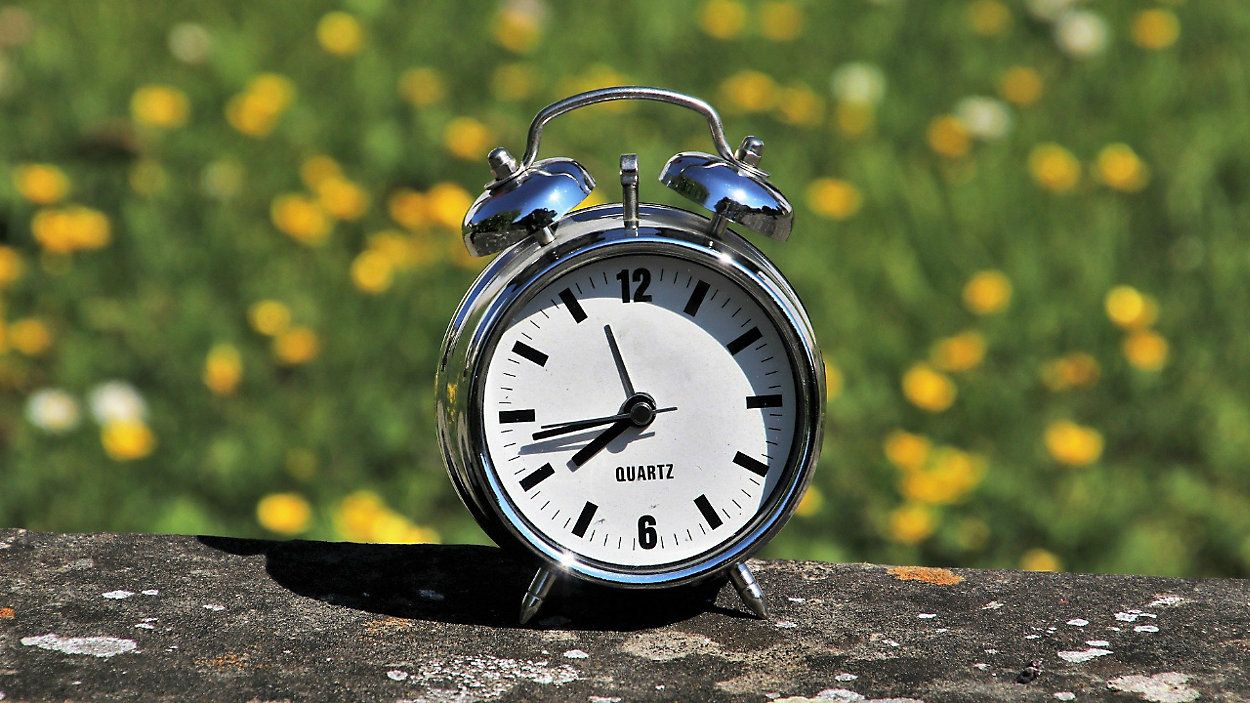It's that time of year where spring is starting to take hold and whether we like it or not, we've got to turn our clocks forward for daylight saving time!
Clocks will officially "spring forward" Sunday, March 13, 2022 at 2 a.m., marking the beginning of Daylight Saving Time. While an hour of sleep will be lost overnight, it pays off with an extra hour of daylight later in the day.
The spring tradition isn't observed in all parts of the U.S. A few states and territories — including Arizona, Hawaii, Guam, Puerto Rico, American Samoa, the Northern Mariana Island and the U.S. Virgin Islands — don't observe daylight saving time.

Origins of daylight saving time in the U.S.
A bill establishing the seasonal time shift was first introduced in 1918, but was later repealed seven months later. The concept was revived under then-President Franklin Delano Roosevelt during World War II.
In 1966, the Uniform Time Act of 1966 established the idea of regulating a yearly time change. Thus, daylight saving time was born, and would begin the last Sunday in April and end the last Sunday in October.
Preparing for the time shift
Here are five tips from Spectrum News Meteorologist Robyn King:
1. Start Sooner
You don’t have to wait for Sunday morning to adjust your inner clock to the time change. Slowly build yourself and your family up to the new schedule 15 minutes earlier each day.
Set the bedtime earlier each night so it won’t be an abrupt difference by Sunday. This is especially important for kids. You can also change your clock Friday night instead of Saturday night. Allowing two days, rather than a single day, can help ease your inner clock to the new time before Monday morning.
2. Get Moving
Exercise and being active are great for your health and typically lead to a good night's sleep! Enjoy a walk outside or move around during daylight hours since this should tire your body out naturally.
Avoid exercise too close to your bedtime. You need to ‘cool down’ before starting to sleep.
3. Say ‘No’ to Bedtime Screen Time
There are screens everywhere – TV, phones, computers – but they can stimulate your brain and make it harder to fall asleep. Instead, try switching out the screens with a book, or try journaling, right before bed. This helps your mind unwind and usually get better sleep.
4. Hold the Coffee
Reducing your caffeine intake and drinking more water can do wonders for your tired body! Avoid alcohol and caffeine for 4 to 6 hours before bedtime.
5. Be Consistent
It’s best to wake up at the same time every morning. And yes, even on the weekends! This will make it easier to transition to the new time,especially when the alarm goes off the first Monday morning after the time change.
The future of daylight saving time
Public sentiment surrounding the time shift is often mixed. Back in 2021, a group of bipartisan U.S. Senators pitched the Sunshine Protection Act, which would make daylight saving time permanent, which would mean Americans wouldn't have to "fall back" in October.
The bill was introduced by both Florida's Republican Senators Marco Rubio (R-FL) and Rick Scott, as well as Sens. Ed Markey (D-MA), James Lankford (R-OK), Sheldon Whitehouse (D-RI), Roy Blunt (R-MO), Ron Wyden (D-OR), and Cindy Hyde-Smith (R-MS).
Several states have passed laws to make daylight saving time permanent, but the law would have to pass at the federal level to take hold.
"Americans’ lifestyles are very different than they were when daylight saving time began more than a century ago,” Whitehouse said last year. "Making daylight saving time permanent will end the biannual disruptions to daily life and give families more daylight hours to enjoy after work and school.”
The bill was introduced in the House Energy and Commerce committee, but did not advance any further.



